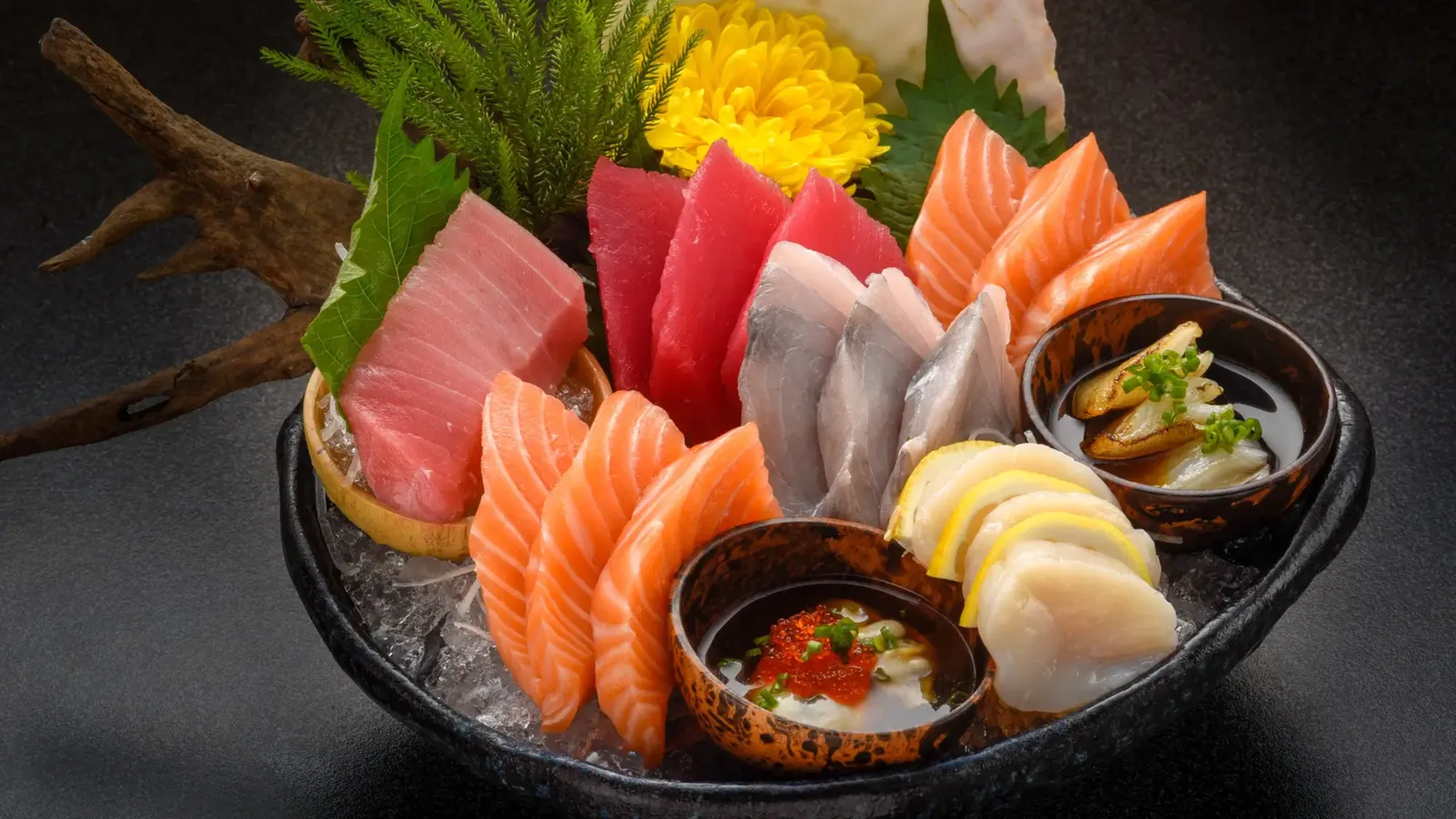
Sashimi
Fresh raw fish or seafood sliced into thin pieces.
Ingredients
- •Fresh fish/seafood
- •Wasabi
- •Soy sauce
- •Shiso leaves
- •Daikon radish
Instructions
Select Fish
Choose fresh, sashimi-grade fish
Slice
Cut fish into precise, thin slices
Present
Arrange with garnishes and condiments
Sashimi represents the purest form of Japanese seafood cuisine - pristine slices of raw fish or seafood that showcase the natural flavors and textures of the ingredients.
This culinary art form dates back to the Muromachi period (1336-1573), when improved fishing techniques and food preservation methods made it possible to serve and transport raw fish safely. The word "sashimi" literally means "pierced body," referring to the traditional practice of sticking the fish's tail and fin to the slices to identify the type of fish being served.
The preparation of sashimi demands exceptional knife skills and an intimate understanding of fish anatomy. Each type of fish requires a specific cutting technique to achieve the optimal texture and flavor. The fish must be extremely fresh and "sashimi-grade," meaning it has been frozen at specific temperatures to eliminate potential parasites.
While tuna (maguro) and salmon (sake) are perhaps the most well-known varieties, sashimi can be made from a wide range of seafood including yellowtail (hamachi), sea bream (tai), and even octopus (tako). Some specialized restaurants also serve horse sashimi (basashi) or chicken sashimi (torisashi), though these are less common and require extreme care in preparation.
In Japan, sashimi is traditionally served as an appetizer course and is artfully arranged on a bed of shredded daikon radish (tsuma), accompanied by wasabi, soy sauce, and sometimes shiso leaves. The presentation is considered as important as the taste, with careful attention paid to color, texture, and arrangement.
From a nutritional standpoint, sashimi is an excellent source of lean protein, omega-3 fatty acids, and various minerals. However, consumers should be aware of mercury levels in certain fish species and ensure they source their sashimi from reputable establishments that follow proper food safety protocols. Pregnant women, young children, and those with compromised immune systems should consult healthcare providers before consuming raw fish.
